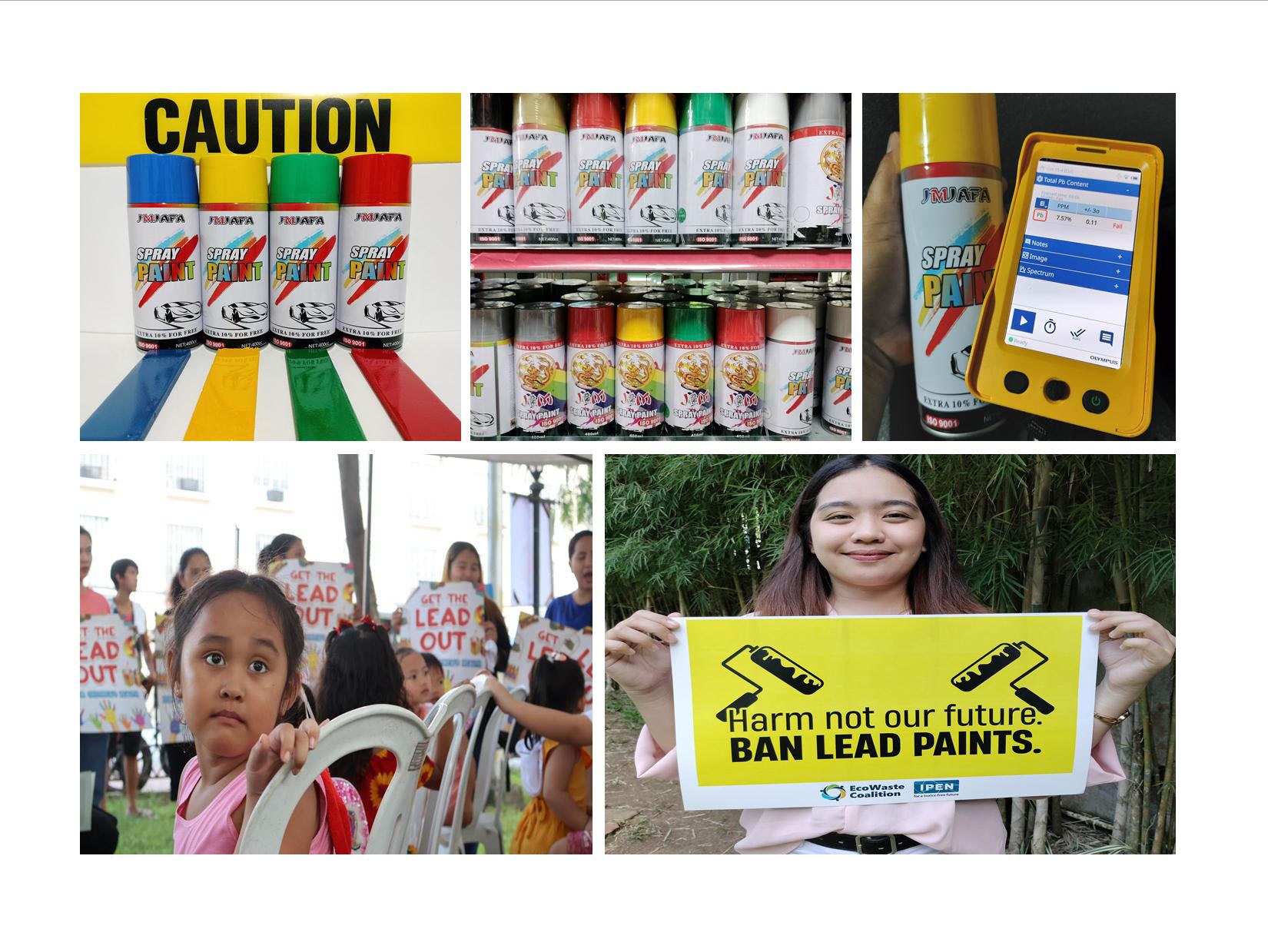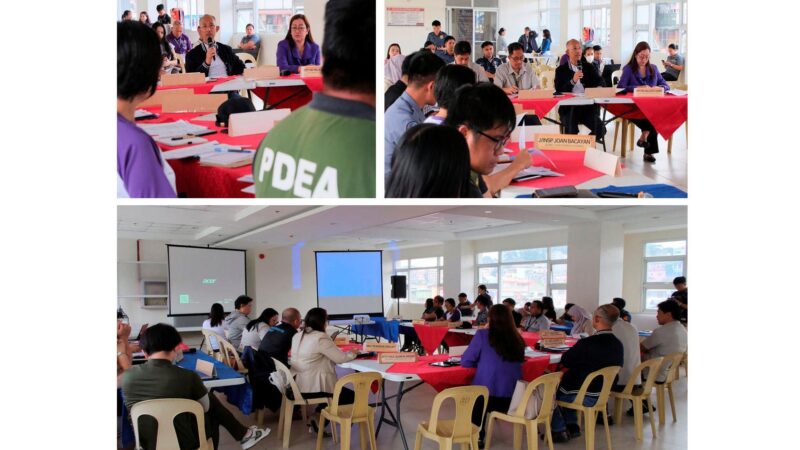EcoWaste Coalition Identifies More Paints with High Lead Content, Presses Action to Uphold Lead Paint Ban

20 October 2024, Quezon City. As the International Lead Poisoning Prevention (ILPPW) is observed, the EcoWaste Coalition announced its discovery of more paints with violative levels of lead, a potent poison that impacts children’s development, damaging the developing brain, the nervous, blood circulatory, immune, and reproductive systems, with an array of adverse effects.
During the last few weeks, the toxics watchdog group tracked several paint products with lead content above the 90 parts per million (ppm) limit as per DENR Administrative Order No. 2013-24, or the Chemical Control Order (CCO) banning the use of lead in paints and similar surface coatings.
Among these newly discovered lead-containing paints were Koby Spray Paint with new lids (fresh green, orange red and medium yellow), Standard Spray Paint (Gongcheng orange red, Jialing red and orange yellow), and Top Standard Spray Paint (green, orange, bright red, scarlet and yellow).
Most recently, the group managed to buy four variants of lead-containing JMJAFA Spray Paint from retailers in Binangonan, Rizal and Tondo, Manila. Insufficiently labeled, this paint brand provided no information about its manufacturer or country of origin. Also, no lead hazard warning was given.
The bright red, VW blue, grass green and medium yellow JMJAFA Spray Paints were verified to contain 177 ppm, 725 ppm, 35,550 ppm and 75,700 ppm of lead, way in excess of the 90 ppm limit. The group used an X-Ray Fluorescence (XRF) device to verify the presence of lead on the dried paint samples.
Two of the products (grass green and medium yellow) were manufactured on January 13, 2024, and the other two (bright red and VW blue) on April 1, 2024. To recall, lead-containing decorative and industrial paints were phased out in the Philippines in December 2016 and December 2019, respectively.
The group will submit the samples this week to a private laboratory for confirmatory analysis.
If the samples flunked the 90 ppm limit, the failed products would be added to the “List of Lead-Containing Paints,” which the group co-released with the International Pollutants Elimination Network (IPEN) and the Philippine Paint and Coatings Association, Inc. (PPCAI).
The said list currently includes 150 lead-containing spray paints representing 37 brands, mostly imported from China and Thailand. The list can be accessed here: https://www.ecowastecoalition.org/leadspraypaints/
According to the Global Alliance to Eliminate Lead Paint (or the Lead Paint Alliance), a voluntary partnership co-managed by the United Nations Environment Program (UNEP) and the World Health Organization (WHO), “paints containing lead pose risks both in their application phase (as new paint) and once applied, giving rise to legacy issues that extend beyond the life of the painted surface due to chipping and deterioration or demolition of the painted surface.”
Realizing the need to tighten global rules on the trade of lead chromates and paint products containing these most common pigments in lead paints, the EcoWaste Coalition, IPEN and other environmental health groups from the Global South are campaigning to get lead chromates listed as hazardous chemicals in the Rotterdam Convention.
If listed, lead chromates and paints containing these pigments will be subject to the treaty’s Prior Informed Consent (PIC) procedure. Companies exporting lead chromates or paints containing them may not ship these commodities to a country that has not consented to receiving them. Also, countries can use the PIC rules to restrict or prevent the entry of lead chromates and paints that contain them.
For the EcoWaste Coalition and its campaign partners, the listing of lead chromates in the Rotterdam Convention will contribute towards the effective implementation of the CCO prohibiting lead in the manufacture of paints, and the prevention and reduction of human exposure to lead, which is considered a non-threshold toxicant among children.
“There is no level of exposure to lead that is known to be without harmful effects,” warned the WHO as it pointed out that “lead exposure is preventable.” (PR)
Reference:
https://chemical.emb.gov.ph/wp-content/uploads/2017/03/DAO-2013-24-CCO-Lead.pdf
https://ipen.org/site/listing-lead-chromates-under-rotterdam-convention







